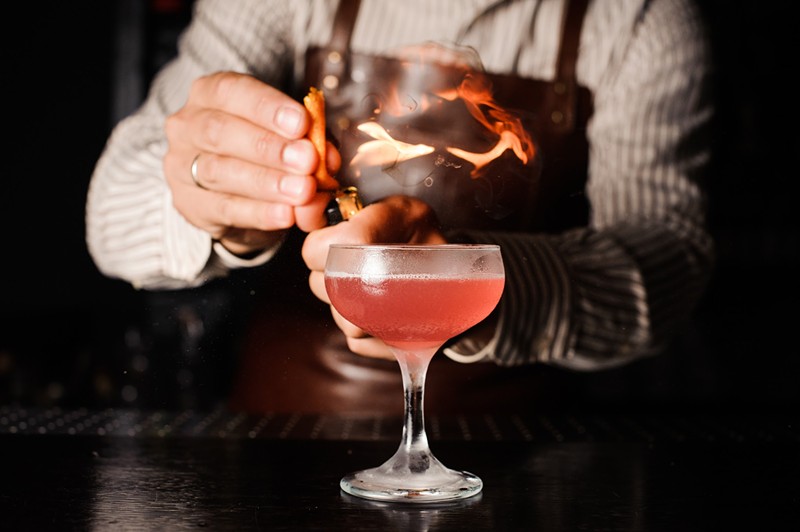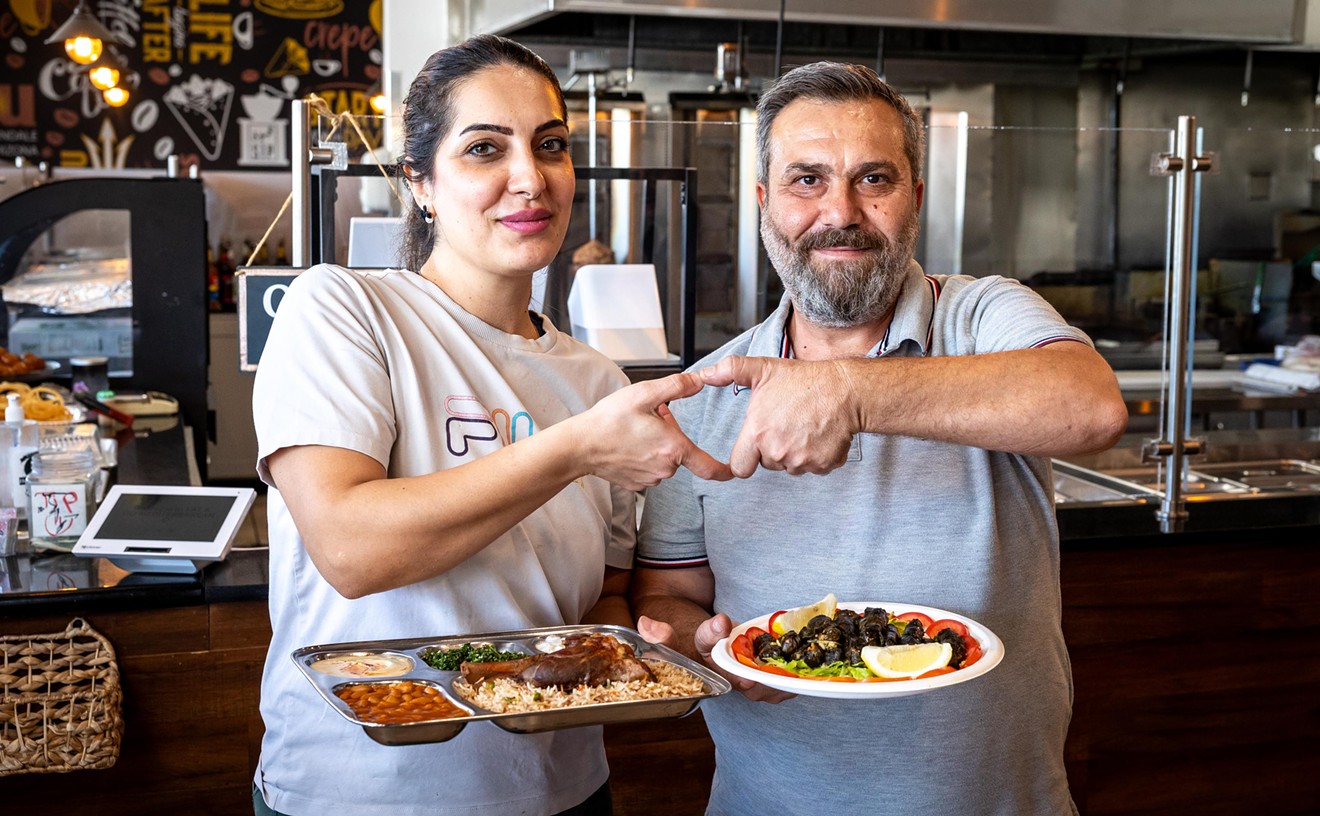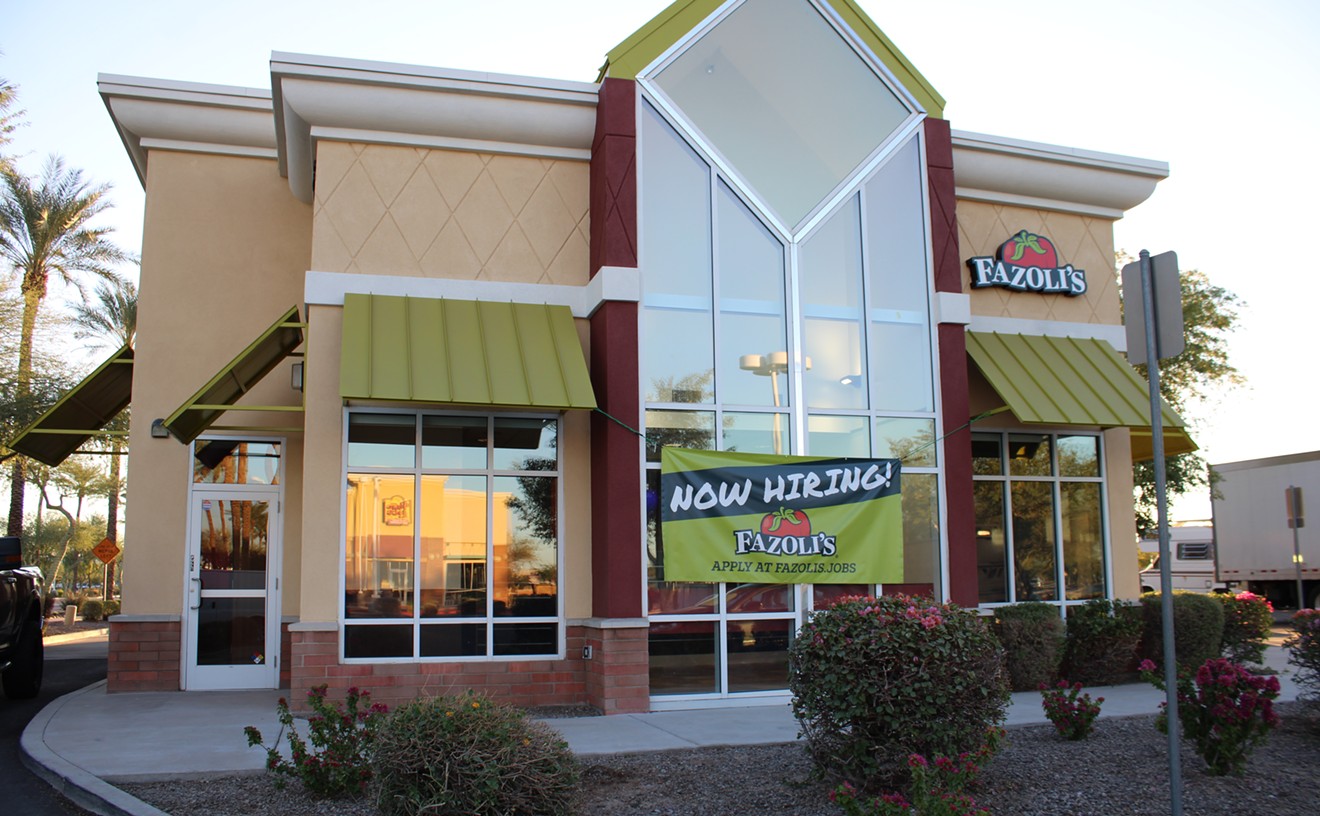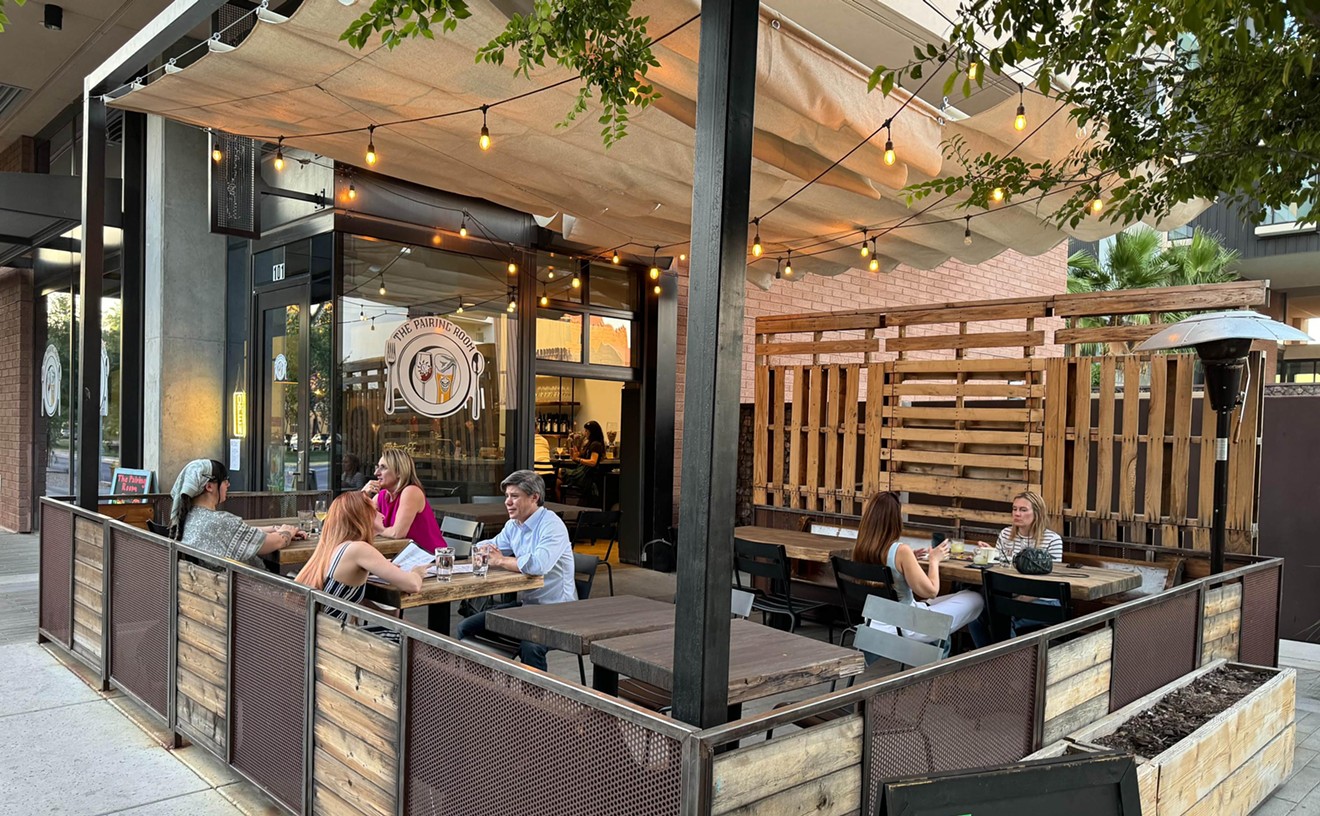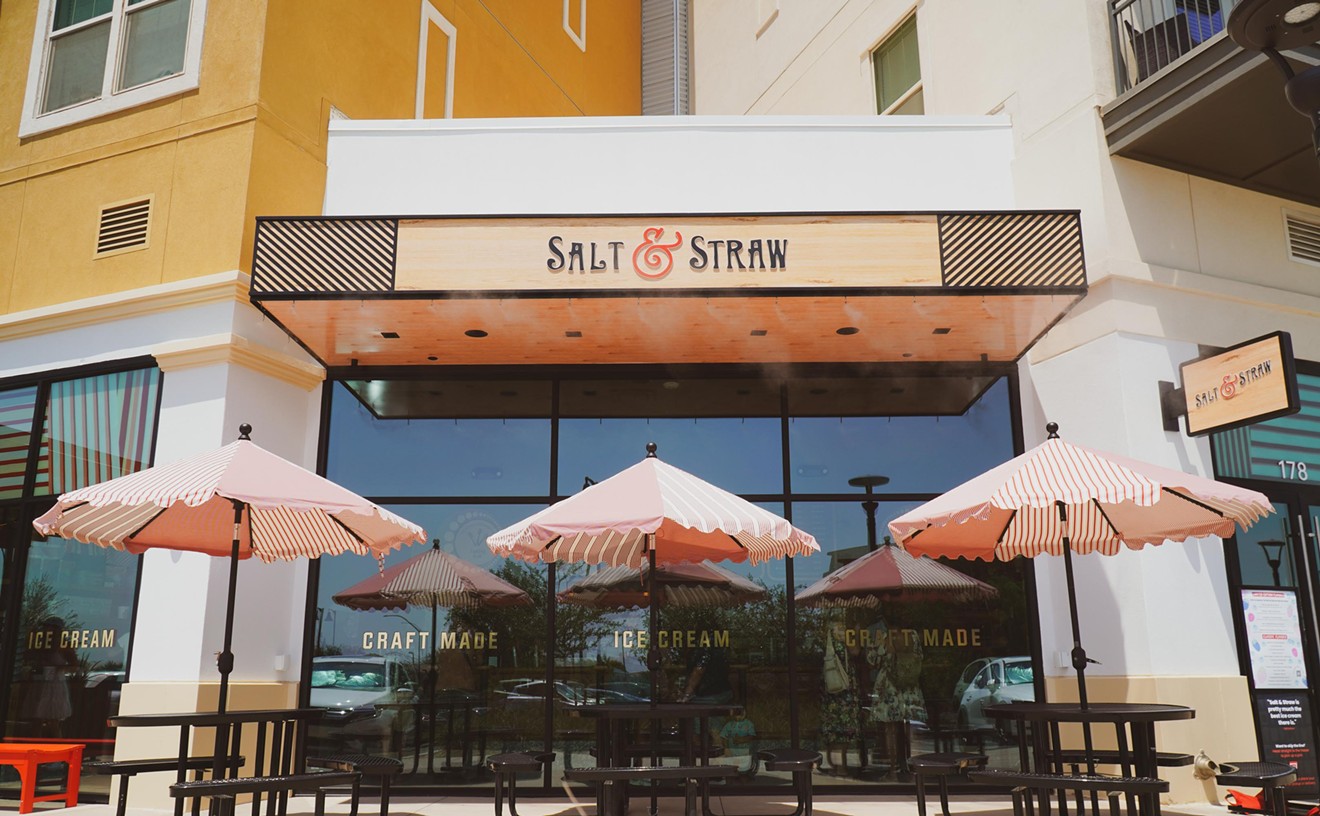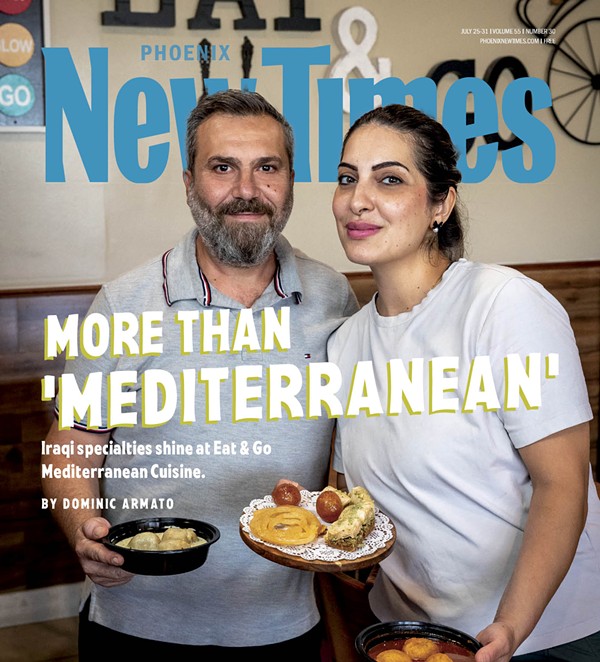The nationwide ban on alcohol known as Prohibition existed from 1920 to 1933. Everyone was drinking hooch and there were plenty of photographs to prove it. The black-and-white photos romanticize the era: dimly lit back rooms, gangsters in three piece-suits, flappers, ladies doing the Charleston … you get the picture.
Documentaries and archived footage give us the speakeasy snapshot we’ve come to know and love. But what did Prohibition look like on the ground in Arizona? What were (Great)-Grandpa Joe and his buddies swigging?
You’ll find some answers below.
“Payson Dew” Moonshine
If your family tree has roots in the heart of the state, chances are your progenitors had their hands on distinct, local moonshine. Flashback to Payson, Arizona, in 1915, when the state ban on liquor went into effect. If you were a rancher or miner, you knew of the 30 to 40 local stills hidden in the canyons that made an alcoholic concoction as popular as far as Hollywood for its quality and strength.
To say that bootlegging Payson Dew boosted the economy of the financially depressed, remote area is an understatement. According to Donna Daly, a Rim Country historian, whiskey flowed from the stills surrounded by the Tonto National Forest. While bars and saloons feigned dryness and lost profits, back rooms offered the prized hooch and kept pockets full.
Payson Dew was so lucrative that an alarm system was made when “Prohis” (Federal agents) snooped about town. Bells were tied to mules that were sent through the countryside as a warning for the stills to shut down production.Payson Dew was so lucrative that an alarm system was made when “Prohis” (Federal agents) snooped about town. Bells were tied to mules that were sent through the countryside as a warning for the stills to shut down production.
tweet this
Payson Dew’s name and flavor are closely related to its Tennessee predecessor, “Mountain Dew.” (Don’t worry, there’s a telltale story about the soda later.) The phrase for the state’s mountain-brewed moonshine spread like wildfire. According to Smithsonian researcher Marissa Fessenden, it even became the inspiration for folk songs.
So what did Arizona moonshine taste like? Probably as you imagine the taste of a clear, unaged spirit with some harshness and maybe a hit of sweet corn. Cheers to that!
Sotol, Agave’s Cousin & Unsung Hero
The cool kids rave about mezcal now, but back in the 1930s the hot drink was sotol. Sotol, a spirit made from the Dasylirion plant (also called the desert spoon for the shape of its leaves) was lumped in with mezcals and achieved little fame in the years leading up to Prohibition. Made from a plant indigenous to Mexico and the American Southwest, it failed to compete with more popular European spirits.
The fashion abruptly changed during Prohibition when sotol’s proximity to the border became an easy answer (and smuggle) to the demand of thirst. Sotol was not only smuggled over the border by car, but also by plane; after World War I, advances in aeronautical engineering gave way to a thriving aerial bootlegging culture. Research shows many smugglers arrested by U.S. customs, including oil tycoon and airline entrepreneur Erle P. Halliburton with his pilot after crossing the border from Mexico to land at El Paso, Texas.
Sotol was well worth the risk. The American Southwest enjoyed what we now know to be the diverse botany and terroir of the agave cousin. Currently, there are 16 known varieties of the plant. Sotol is heavily influenced by where it’s grown, ranging from the piney and minty variety of the forest to the earthy, peppery, chocolate kind one finds in the desert.
Sotol still carries a reputation as northern Mexican moonshine. While campaigns against the spirit attempted to destroy its popularity in the past, there's still love for and a newfound curiosity for this underdog of the spirit world. If you’re lucky enough to find a sotol cocktail, drink up and think of its rich history.
Hell, I’ll Build My Own Bar
If you were wealthy enough and wanted to keep the cocktail party going during Prohibition, well, you brought the bar home. Local historian Douglas Towne found that Phoenix high society indulged upon stockpiled booze and moonshine smuggled from Mexico. And if you were Barry Goldwater’s father, you bought the bar.
In his 1979 memoir, With No Apologies, Goldwater says, “When Prohibition became the law of the land, my father bought the bar, the back bar, and the brass foot rail of his favorite saloon and had them installed in the basement of our house.” Bars then were stocked with gin, whiskey, brandy, and vermouth, but cheaper and closer-to-home moonshine became dominant as expensive European liquors became a tougher find.Goldwater says, “When Prohibition became the law of the land, my father bought the bar, the back bar, and the brass foot rail of his favorite saloon and had them installed in the basement of our house.”
tweet this
Drinks mixed with soda, Coke, and ginger ale were popular as they masked cheaper, unrefined hooch. A few cocktails of the era, as written in Giggle Water — one of the few books on cocktails published during Prohibition — included the Bronx (dry gin, vermouth), Clover Club (gin, egg white, grenadine), and the classic Manhattan (rye whiskey, vermouth). Indeed, Barry Goldwater’s words rang true: “The country went dry, but [our] bar was always wet.”

